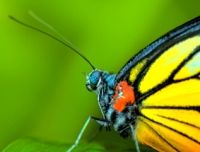

Butterfly populations that live on grasslands across Europe have declined by more than a third in the past decade, according to a study.
Seventeen species that were once commonly found in pastures and meadows across 22 countries declined by 36% on average between 20211 and 2020, including:
The population drop is more severe in Britain than in other countries, but the large blue (Phengaris arion), which was the species worst affected across Europe, where numbers are down 82% since 1990, is thriving in Britain due to a reintroduction programme and ongoing targeted conservation management.
Other species showing significant declines across Europe include the:
Conservation scientists attribute the ongoing declines to agricultural intensification, including the ploughing of traditional grasslands, and the heavy use of fertilisers and herbicides, which destroy the wildflowers and grasses that butterfly caterpillars feed on.
Other factors include nitrogen deposition from vehicle emissions and agriculture, and global heating.
Nigel Bourn, Chief Scientist at Butterfly Conservation, said: "These really horrific large-scale declines are driven by major changes across Europe, although it's very difficult to tease apart the relative contribution of all these major changes we're seeing".
"It's pretty depressing. These are widespread species and we should be really worried about them and what they tell us about the state of the general countryside. We have to find a new more wildlife-friendly way of growing food and we’ve still got quite a long way to go".
The figures are based on data from the European grassland butterfly indicator, a key measure of the health of European grasslands, which has been compiled by Butterfly Conservation Europe.
European conservationists hope that the EU's proposed nature restoration law, which sets out binding targets to reverse the decline in wild insect pollinators and return nature to ecosystems, will help to halt the losses. Member States will be given two years after the regulation has been introduced to submit plans on how they intend to meet the targets, and are obliged to record whether their measures work, with the butterfly indicator being one of the key markers of success.
Dr Martin Warren, Head of Development at Butterfly Conservation Europe, said: "The rapid decline of Europe’s grassland butterflies is a clear warning sign of the plight of wildlife across Europe. The new EU restoration law is a massively important piece of legislation to tackle these declines and we hope that member states will rise to the challenge to help solve the biodiversity crisis we are facing".
For more information on this subject, see: